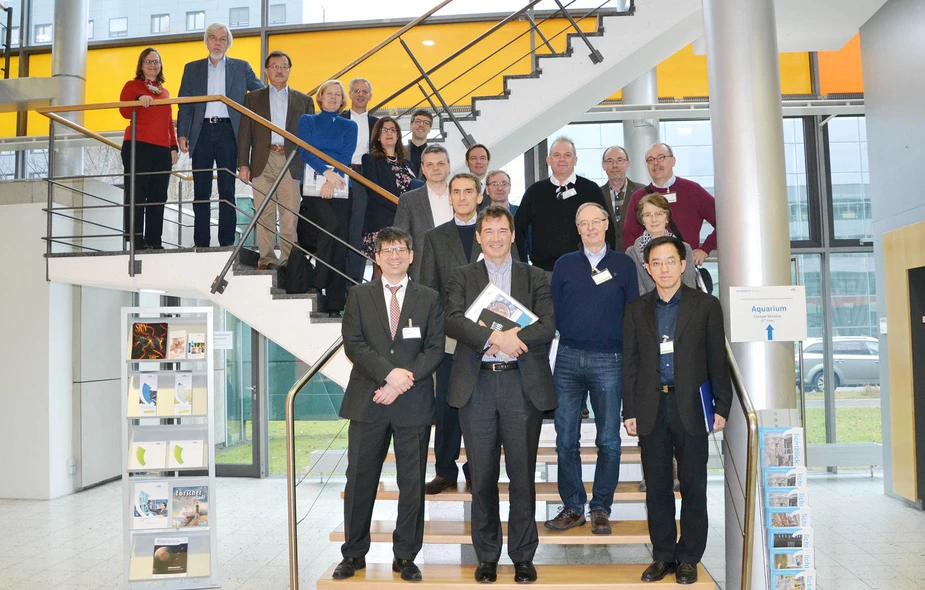Calls for rapid planning of BESSY III
Evaluation by international panel of experts supports HZB
The Helmholtz-Zentrum Berlin (HZB) has received an evaluation of “excellent” in a review of science programmes undertaken at all Helmholtz Research Centres. This provides the foundation for future financing of HZB. Two committees of leading international scientists visited the HZB for a week each at the beginning of this year. They evaluated the HZB's contributions to the Helmholtz programmes in the research areas of “Matter” and “Energy”. Now the written evaluations are available. The team spirit of all employees involved in the HZB was particularly emphasised.
The report states that the HZB and the Helmholtz Association have made decisions characterised by vision. The right course had been set both in terms of infrastructure and in recruiting people. The HZB can rely on highly competent, committed employees at all levels. All research programmes of the HZB have received an evaluation of “excellent”. The HZB contributions to the MML programme (From Matter to Materials and Life) focussing on the use of photons are considered to be leading, with all of its participating groups receiving the top marks of “Outstanding” or “Excellent”. The Renewable Energies (RE) and the Future Information Technologies (FIT) programmes, the instrumentation at the BESSY II synchrotron (some of which is unique), and the BER II research reactor were likewise evaluated highly. The HZB is certified as being one of the top institutions in worldwide energy and materials research. In addition, the HZB received support for the construction of BESSY III, the successor to the present BESSY II synchrotron that is currently used for experiments by about 3000 scientists each year.
The Variable Storage Ring (VSR) design can revolutionize the next generation of storage rings
The experts encouraged the HZB to plan BESSY III quickly and advance its development, especially in view of HZB's leading expertise in international comparisons for generating of ultra-short light pulses. The programme to upgrade BESSY II to BESSY-VSR that has already begun as a precursor to BESSY III was explicitly praised and supported. However, in order to achieve the most effective installation of BESSY-VSR, additional funds would need to be invested and all resources optimally used, according to the recommendation of the expert commission.
If the VSR concept is successfully implemented, it has the potential to revolutionize the next generation of storage rings and to significantly influence their design, according to the experts. There was also concomitant praise for development of the new generation of enthusiastic, well-trained accelerator physicists the HZB has helped produce through its research environment and in conjunction with the BESSY-VSR activities.
Synergies created between solar fuel and photovoltaic research
In the Helmholtz research field of “Energy”, the panel was particularly impressed by how the HZB succeeded in creating synergies between its well-established photovoltaic research and the newly established research on solar fuels. HZB's research on new perovskite materials is a highlight and particularly promising, according to the panel. The development of new metal oxides for solar fuels is likewise denoted as fundamentally important. The experts confirmed that HZB holds a leading position with regard to research on semiconductor photoelectrodes for the production of solar fuels.
In addition, the HZB delivers excellent science in emerging, fast-growing new research areas such as topological isolators and other exotic quantum materials.The panel also praised the importance of both BESSY II and the BER II neutron source for HZB research during the evaluation period. Above all, the Energy Materials In Situ Laboratory (EMIL) set up at BESSY II offers new means of addressing many research questions in energy research, with some of its approaches being unique. This includes operando investigations at the interfaces of materials, for example.
According to the experts' recommendation, the outstanding instruments of BER II absolutely should be preserved and transferred to other neutron sources after the scheduled BER II shutdown at the end of 2019. Prof. Dr. Bernd Rech, acting Scientific Director of the HZB, is pleased with the positive evaluation results. “The evaluation shows that we have tackled the right topics and that HZB is a go-to address in energy and materials research. I am particularly pleased that we have received so much support for the development of BESSY III.”
Contact:
Helmholtz-Zentrum Berlin für Materialien und Energie
Dr. Ina Helms
Press Office
Tel. (030) 8062-42034
Email ina.helms(at)helmholtz-berlin.de
Dr. Olaf Schwarzkopf
Staff department research programs and funding
Tel. (030) 8062-12947 / -42908
Email olaf.schwarzkopf(at)helmholtz-berlin.de
